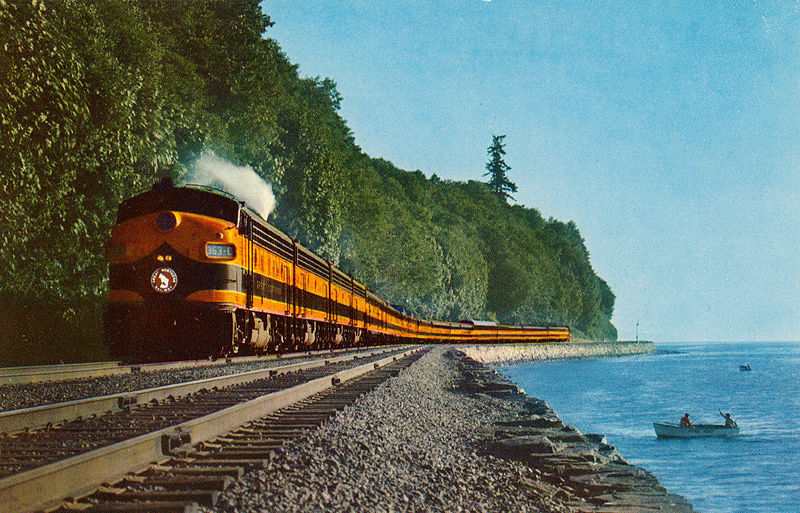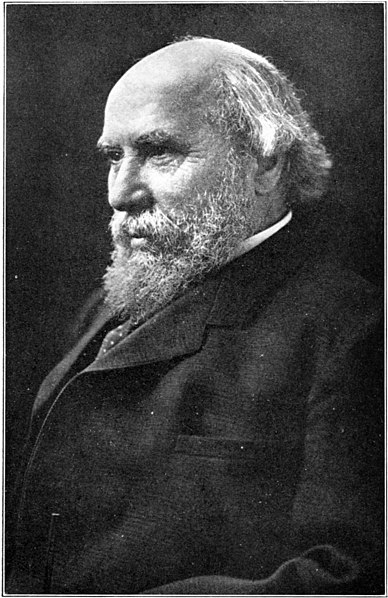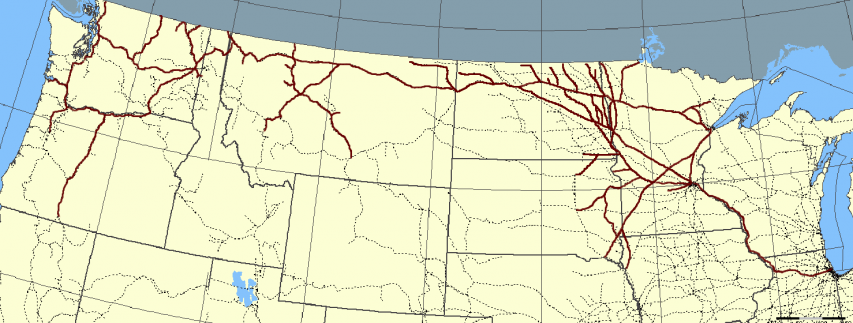Dane Stuhlsatz outlines the story of US federal government subsidies and other interventions into the 19th century railroad industry and the one tycoon who avoided the lure:

Postcard photo of the Great Northern Railway’s “Empire Builder” streamliner between Everett and Seattle, Washington, circa 1963.
Great Northern Railway postcard via Wikimedia Commons.
Burton W. Folsom, Jr. outlined this story in his book, The Myth of the Robber Barons, identifying two models of entrepreneurship; the “political entrepreneurism” of lines like the Union Pacific and Central Pacific versus the “market entrepreneurism” of James J. Hill and his Great Northern Railway.
Canadian-born James J. Hill (1838-1916) in 1914.
Photo from Famous Living Americans, edited by Mary Griffin Webb and Edna Lenore Webb via Wikimedia Commons.As Folsom details, the former chased government largesse, ultimately in exchange for loss of control of their business, while the latter chased profits through prudent business decisions. Hill’s success juxtaposed with UP’s and CP’s failure is due in no small part to his steadfast refusal to accept any federal subsidies. In short, UP’s and CP’s government subsidized incentives were vastly different from Hill’s profit driven incentives, which lead to vastly different outcomes.
Federal subsidies incentivized speed, not efficiency. The subsidies were paid in the form of both land grants and direct payments. For each mile of track laid, the UP and CP would receive 20 acres of land and either $16,000 (for track on flat land), $32,000 (for track on hilly terrain), or $48,000 (on mountainous terrain). This incentive for speed resulted in winding, inefficient, routes built with inferior materials, ultimately culminating in a federal price tag of 44,000,000 acres and $61,000,000 (astronomical sums in the 1860s-70s). Despite all this federal assistance, shortly after the golden spike was driven on May 10, 1869 at Promontory Summit, Utah, the UP and CP were nearly bankrupt and required further assistance to stay afloat.
The lines which were born and brought up on federal aid needed federal aid to continue. This led to the passage of the Thurman Law in 1874 which forced UP to pay 25% of its earnings a year to pay its federal debt.
UP’s profitability decisions were also subject to government approval. Branch lines — smaller lines off the main line into rural communities — which could have helped UP’s bottom line, were often not approved by federal bureaucrats. Additionally, the federal Bureau of Railroad Accounts required constant checking of UP’s books. All these measures stifled the ingenuity that UP so desperately needed to make its line profitable. UP quickly found out that the power to subsidize was the power to destroy.
Hill’s line on the other hand was methodically surveyed and built, on the shortest routes possible, with the least gradient possible, and using the best steel and other materials on the market at the time. Rather than political largess, Hill made his decisions based on profit and loss. But, for all the efficiency that Hill built into his line — he was able to transport across the country faster, cheaper, and with less maintenance costs than could the UP and CP — arguably the most important aspect for the viability of his business was the freedom to conduct business untethered by the strings that accompanied government subsidies.
While Hill was free to build when and where he wanted so long as he reached voluntary agreements with landowners, consumers, and employees, UP was tied up in red tape. As Hill’s line grew evermore profitable and reliable for customers, the UP and CP struggled along on federal aid, until they ultimately went bankrupt in 1893.
For his part, Hill’s line was the only transcontinental railroad to never go bankrupt.





